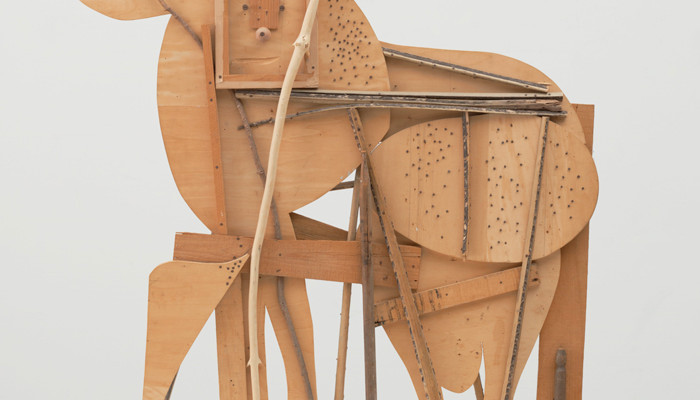Final Proposals – Hanyang
1. Digital Vision
My first idea is to create a series of sculptures derived from how a computer view everyday objects. I want to 3D scan these objects to convert them into faces and wire frames, which is how a computer understands 3D shapes. The next step is to reduce the complexity of these shapes until they are barely recognizable and then 3D print the wire frame of the simplified object.
I got the idea for this second step when I visited the Picasso Sculpture exhibition at MoMA. I really enjoyed how in his sculptures, Picasso reduced objects to basic geometric shapes. He then created bizarre sculptures made of these shapes after rearranging and modifying them. The final product is different from the original, yet still resembles its origin in spirit.
2. Origami World
For this one, i want to turn 3D models of famous object into origami. Maybe I will create a series of sculptures showing different stage of the origami or perhaps experiment with different materials.
3. 3D Rube Goldberg machine
I would create a Rube Goldberg machine simulation in a computer and also print out the parts and try to construct a physical one. I think it would be interesting to see the differences in how each plays out.

1. I really enjoy the Picasso inspiration behind this idea. I hadn’t thought about Picasso’s cubist art style in connection to the low poly computer geometries before and it seems like a fertile ground for exploration. It would be especially cool if you took into account that the spirit of Picasso’s cubism considers ways to represent multiple perspectives in one view, and mashed up the 3D scans so that they’re not just low poly but also deliberately morphed in arrangement. This idea would also be great as an installation in a gallery style way, as you would expect to see a Picasso, but made with a clearly digital medium.
2. This one seems connected to the first idea in some ways; I can tell that you’re interested in reducing geometries of real world things into simpler forms. Origami is a lot like low poly meshes, except associated with the physicality of paper. I think it’s an intriguing idea to show the steps that progress into a finished origami, like the instructions sheets you find that illustrate how to fold origami, but have each step also be a finished sculptural piece. I can imagine this project being very playful and colorful. Maybe you can even do this whole series in giant sheets of paper,.
3. This one is tricky and will need a lot of experimenting and figuring out, but it should be doable. Some people in my MS2 last year made a Rube Goldberg machine involving physical and digital components. I’ll dig up the reference and show it to you if you choose to make this as your final. This one is cool because I’ve never seen a simulation of a Rube Goldberg and a physical Rube Goldberg side by side. I think if executed well it will be great at showing the disparities between computer simulations and physical behaviors.
I think the idea of the wire frames is pretty amazing! If I understand it properly it should probably give a very good and precise frame with the least complex manner. Is it going to be geometric? Is that where Picasso’s influence is part of? If so then maybe you can also play with other geometric shapes and make them round and curvy like Gaudi for example.
The origami idea is pretty cool as well. Maybe you can also include lasercut pieces with that using different materials (leather, paper and other stuff). It could also be very cool if you were able to do a hybrid between origami and puzzle in which you can 3d print some parts and laser cut the outer shell for example.
I also think it could be very interesting to see Rube Goldberg machine printed but I think this might be a project bigger than thesis.
The third idea sounds really fun, but may be too much to undertake within this timeframe! Also, you’d probably have to design with printability in mind. If you framed it as creating a machine in digital space and then printing to see if it also worked in physical space, you would leave yourself room for the physical one to not work but still be cool.
I’m least jazzed about the second idea — I think it’s been done — unless you origami really WEIRD things, like dissected animals or human organs or something.
The first one is my favorite — it’s a very cool idea and it’s in your “wheelhouse”; the zone you like to work in. Questions for fleshing it out would be what specific shapes or things you’ll focus on, and what their symbolism means for how you modify them and re-present them. Also, what physical space will this be displayed in? Will viewers understand what you did, or do you intend the new objects to be appreciated in their own right but detached from their origins?